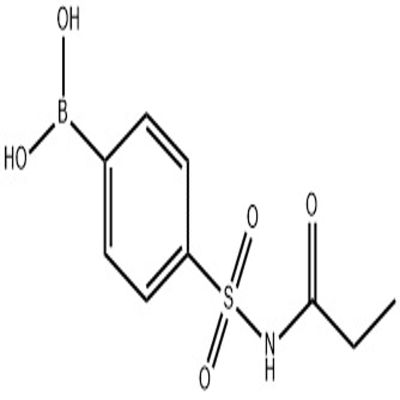-
Categories
-
Pharmaceutical Intermediates
-
Active Pharmaceutical Ingredients
-
Food Additives
- Industrial Coatings
- Agrochemicals
- Dyes and Pigments
- Surfactant
- Flavors and Fragrances
- Chemical Reagents
- Catalyst and Auxiliary
- Natural Products
- Inorganic Chemistry
-
Organic Chemistry
-
Biochemical Engineering
- Analytical Chemistry
- Cosmetic Ingredient
-
Pharmaceutical Intermediates
Promotion
ECHEMI Mall
Wholesale
Weekly Price
Exhibition
News
-
Trade Service
2,6-Dihydroxy-5-fluoro-3-cyanopyridine (DFCP) is an important chemical intermediate that is widely used in the pharmaceutical industry, agriculture, and other chemical synthesis processes.
As an essential building block for the production of various active pharmaceutical ingredients (APIs), it is of great interest to the chemical industry.
The preparation of DFCP involves several steps, and the instructions for its synthesis must be followed meticulously to ensure the desired product is obtained.
This article provides an overview of the instructions for the synthesis of 2,6-dihydroxy-5-fluoro-3-cyanopyridine.
Step 1: Preparation of the starting material
The preparation of the starting material is the first step in the synthesis of 2,6-dihydroxy-5-fluoro-3-cyanopyridine.
The starting material is 2,6-dihydroxyacetophenone which can be obtained by hydrolyzing 2,6-dichloroacetophenone in a basic medium.
The hydrolysis reaction is typically carried out using a large excess of sodium hydroxide, and the resulting 2,6-dihydroxyacetophenone is extracted with a solvent such as ethyl acetate.
Step 2: Halogenation of 2,6-dihydroxyacetophenone
The next step is the halogenation of 2,6-dihydroxyacetophenone, which is carried out by treating the compound with a halogenating reagent such as chloroform.
The reaction is typically carried out in the presence of a solvent such as dichloromethane, and the resulting product is extracted with a solvent such as ether.
Step 3: Decarboxylation of 2,6-dichloro-5-fluoropyridine
The third step is the decarboxylation of 2,6-dichloro-5-fluoropyridine, which is obtained by treating the product from the previous step with sodium hydroxide in water.
The resulting product is extracted with a solvent such as ethyl acetate, and the organic layer is dried over anhydrous sodium sulfate.
Step 4: Cyanation of 2,6-dihydroxy-5-fluoropyridine
The final step is the cyanation of 2,6-dihydroxy-5-fluoropyridine, which is carried out by treating the compound with a cyanogenating reagent such as hydrogen cyanide or a salt thereof.
The reaction is typically carried out in the presence of a solvent such as acetonitrile or DMF, and the reaction mixture is then treated with an aqueous solution of sodium carbonate to extract the product.
The organic layer is dried over anhydrous sodium sulfate and the solvent is removed under reduced pressure.
The resulting residue is then purified by chromatography on a suitable stationary phase to obtain 2,6-dihydroxy-5-fluoro-3-cyanopyridine.
In conclusion, the synthesis of 2,6-dihydroxy-5-fluoro-3-cyanopyridine involves several steps, and the instructions for each step must be followed precisely to ensure the desired product is obtained.
The compound is an important intermediate in a variety of chemical synthesis processes and is commonly used in the production of active pharmaceutical ingredients.
As such, a proper understanding of the synthesis of this compound is critical for those working in the chemical industry.





![1-METHYL-4-[5-(4,4,5,5-TETRAMETHYL-1,3,2-DIOXABORALAN-2-YL)PYRIDINE-2-YL]PIPERAZINE](https://file.echemi.com/fileManage/upload/goodpicture/20210822/m20210822160345712.jpg)

